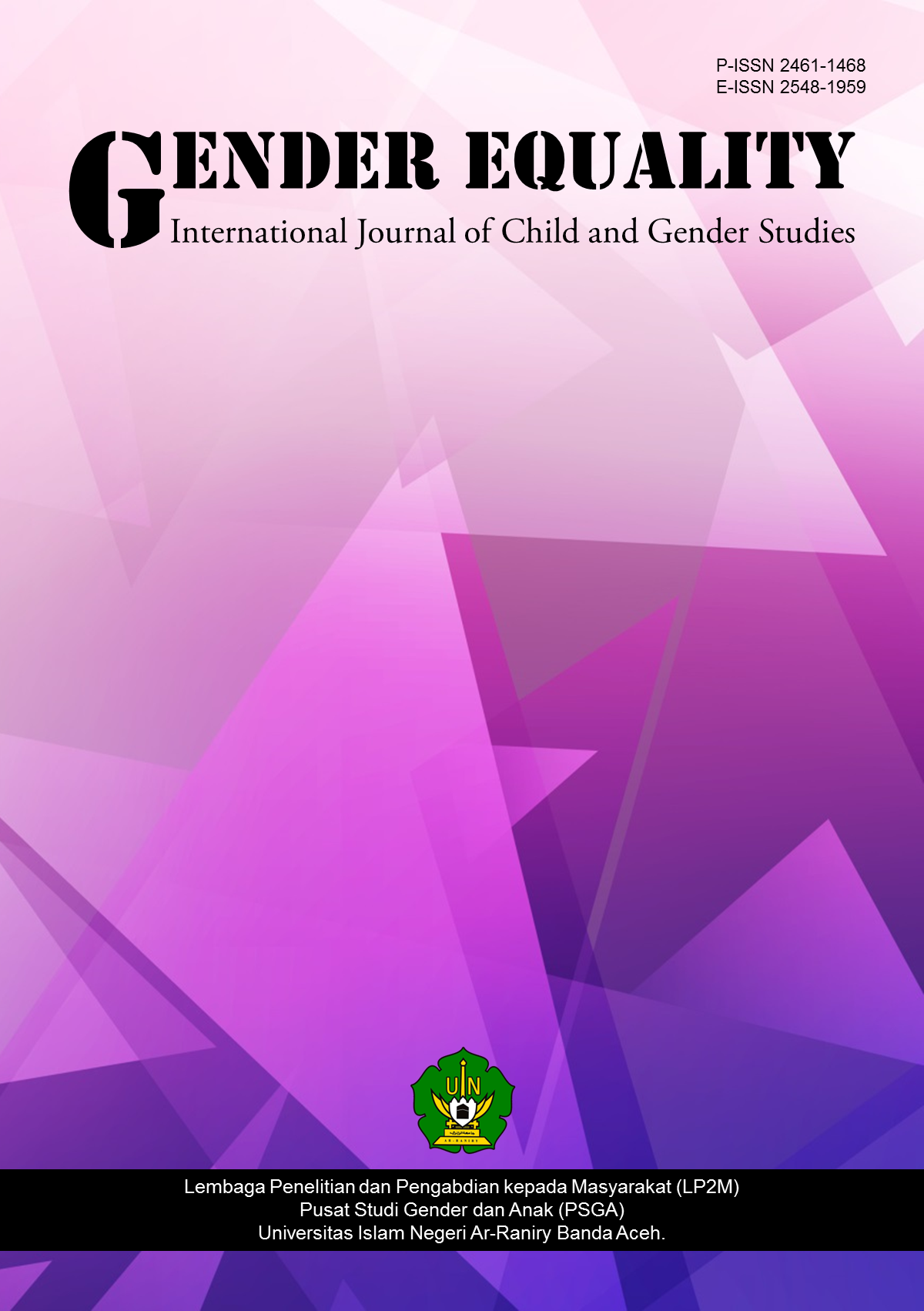Post-Traumatic Stress Disorder Among Sexually Abused Children: The Role Of Traumagenic Dynamics Model
DOI:
https://doi.org/10.22373/equality.v2i2.1460Keywords:
sexual abuse, children, traumagenic dynamics modelAbstract
Sexual abuse is one of the most serious cases occurring in this present day, and the statistical trend generally classifies the children to be more vulnerable compared to other groups in the population, where the female children show the highest prevalence among others (Pérez-Fuentez et al., 2013; Stoltenborgh, van Ijzendoorn, Euser, & Bakernas-Kranenburg, 2011). The children who have been exposed to sexual abuse may increase their risk of developing psychological problems, such as: depression, eating problem, anxiety, psychosis, substance abuse, thoughts of suicide, etc (Makhija, 2014). Furthermore, some research findings mention that post-traumatic stress disorder (PTSD) is the most common mental health problem that occurs after sexual abuse and the symptoms arisen may have different effect for the children as the victims (Martinson et al., 2013). In order to comprehend this issue, Finkelhor and Browne (1988) has formulated a model called traumagenic dynamics model which comprehensively illustrates the trauma caused by childhood sexual abuse and describes it as long-term effects during the life span. As a way to investigate the trauma caused by sexual abuse, the model has conceptualized the four factors which are labelled as traumagenic dynamics, these include: traumatic sexualization, betrayal, powerlessness, and stigmatization or self-blame (Finkelhor & Browne, 1988).Downloads
Published
Issue
Section
License
GENDER EQUALITY: International Journal of Child and Gender Studies allows the author(s) to hold the copyright and to retain the publishing rights without restrictions. Authors who publish with this journal agree to the following terms:
- Authors retain copyright and grant the journal right of first publication with the work simultaneously licensed under a Creative Commons Attribution License that allows others to share the work with an acknowledgment of the work's authorship and initial publication in this journal.
- Authors are able to enter into separate, additional contractual arrangements for the non-exclusive distribution of the journal's published version of the work (e.g., post it to an institutional repository or publish it in a book), with an acknowledgment of its initial publication in this journal.
- Authors are permitted and encouraged to post their work online (e.g., in institutional repositories or on their website) prior to and during the submission process, as it can lead to productive exchanges, as well as earlier and greater citation of published work.



